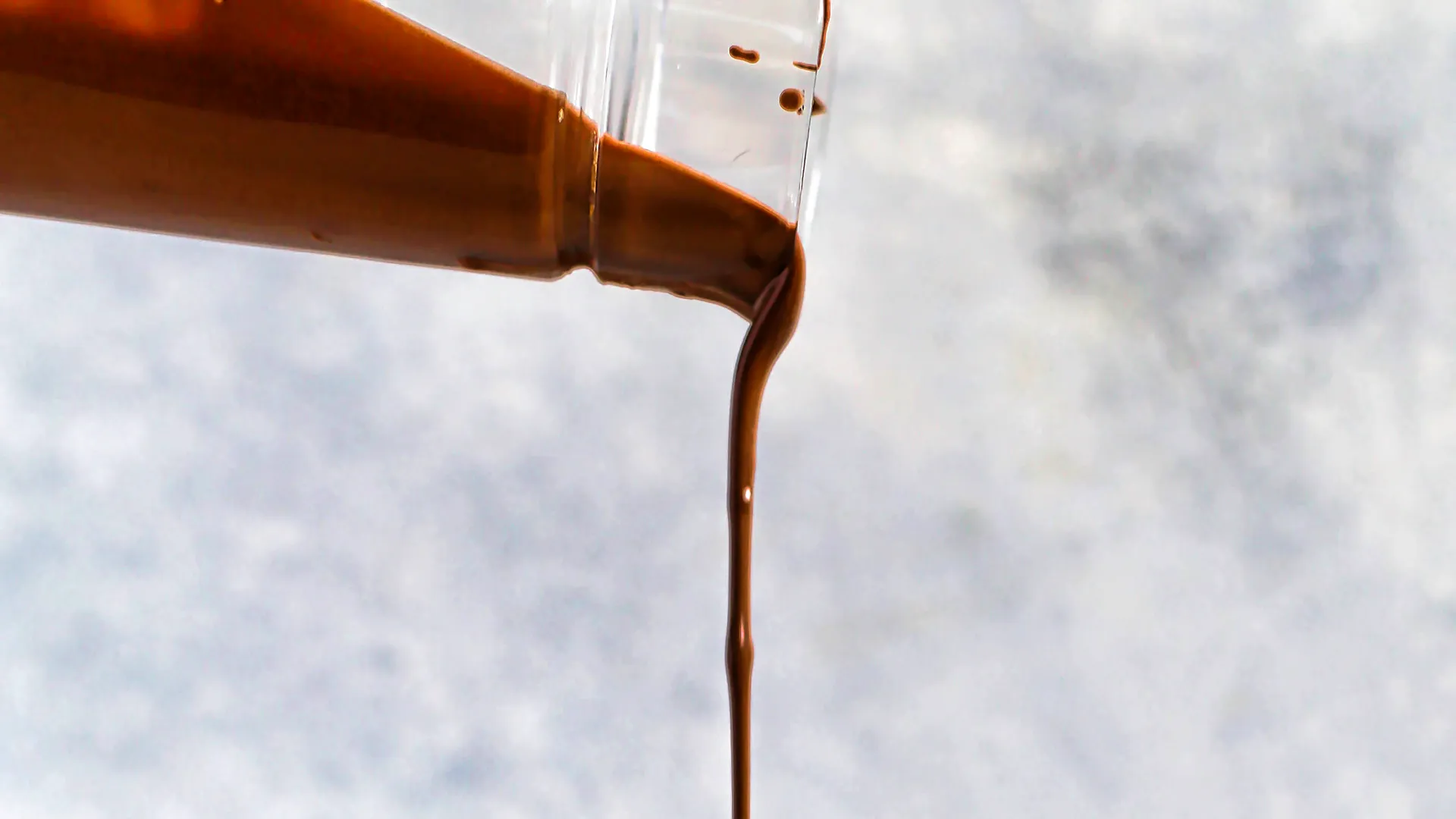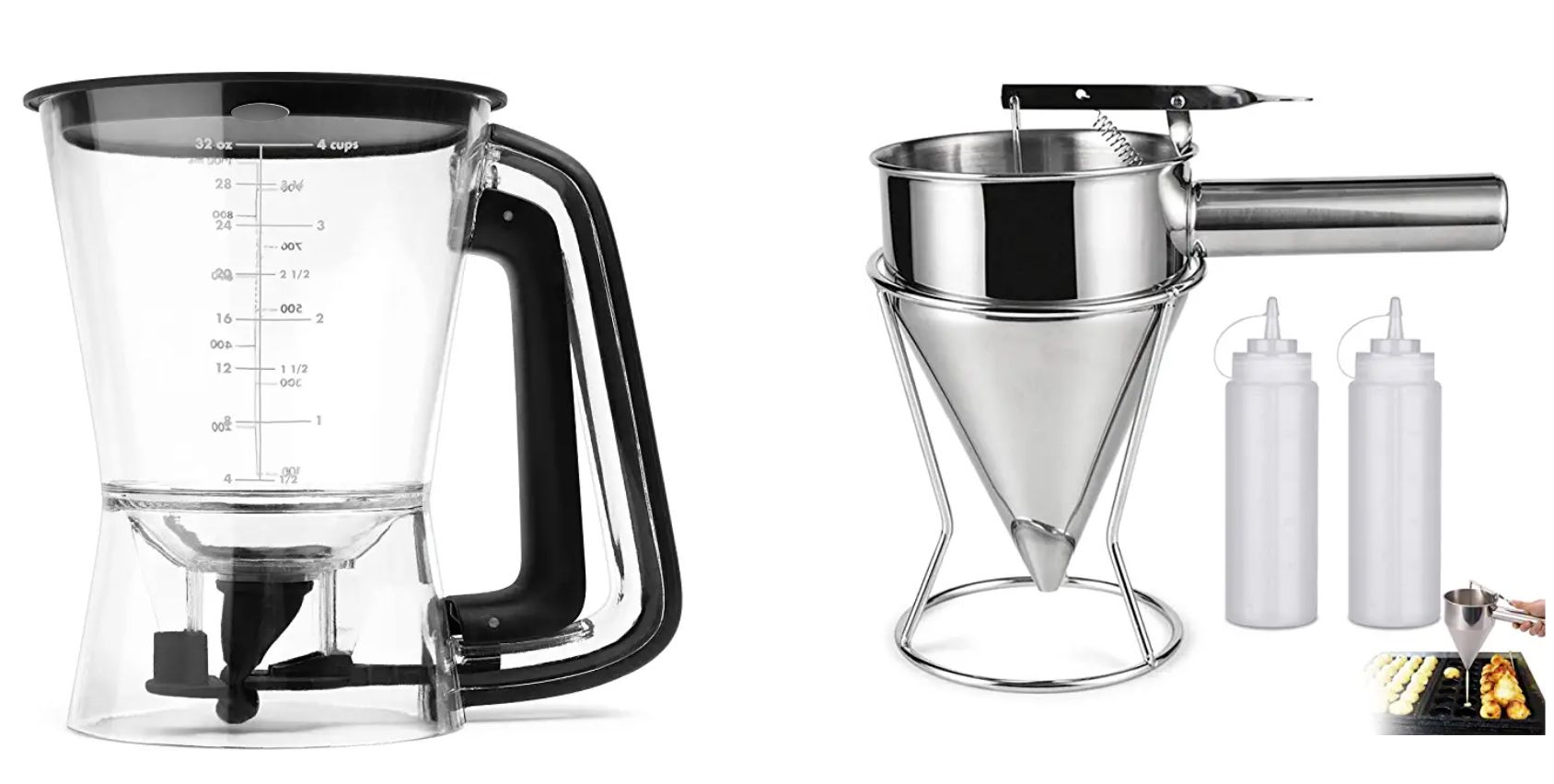Hand Depositing Options & Alternatives

ChocolateLife member Beth from Canada asks,
“I am looking for solutions to hand depositing chocolate into molds. I currently weigh out chocolate for each mold using a plastic funnel I have sourced on Amazon that is generally used for pancake batter. I have gone through 4 of these already because they keep breaking and I need a more industrial solution but I haven't had any luck searching online. I have tried ordering a stainless steel version but one of the issues is we use inclusions in many of the bars and they don't fit through most holes which was the case with this one. I found two plastic ones that work for the most part until they crack or a piece breaks and then they go in the landfill. This is hurting my heart as I am a very eco-conscious gal and I hate plastic and hate having to replace something multiple times a year. Any other options would be most appreciated.
“We have to continue making do until we can afford to upgrade to a new tempering machine that will have a depositing head and eliminate this time consuming process.”
Beth:
This is one of the classic challenges every small maker faces until they can upgrade from a small batch tempering machine (like a Chocovision) to a tempering machine that has measured depositing capabilities – how to efficiently fill molds with a specific amount of chocolate.
I have watched people struggle using funnel dispensers, ladles, plastic squeeze bottles, syringes, pastry piping bags (the non-reusable plastic kind), and more. I have never seen an alternative that did not have serious impact on production efficiency.
One possible option is the Peppy Pumper pneumatic chocolate pump which is available through Hilliards. It’s a relatively low-cost solution (when compared with a new tempering machine) that might fit on your current tempering machine. It does require a compressor to run but it will not solve the problem of depositing bars with inclusions. I don’t know what percentage of your bars have inclusions – and not knowing what your inclusions are I wonder if you could weigh the inclusions into the mold, deposit chocolate on top, and then vibrate the heck out of things.

From your description it sounds like you’re placing your molds on a scale to get the weight you’re looking for (if you’re not this is the easiest way to get precise weights) and your description seems to match these two basic types of dispensers, (these are probably not the models you’re using):

Looking at the plastic squeeze bottle tops, which I know can be snipped at different places to control the flow of what’s being dispensed, what occurred to me just now, for the first time, is that there just might be a DIY solution to fixing the nozzle size on a S/S funnel.
This would involve cutting off a part of the bottom of the funnel, shortening and widening it. This would then be fitted (somehow) with a pastry bag nozzle of a better size. I don’t have any idea of any of the dimensions required and the obvious challenge will be to make sure that the plunger which cuts off the flow of chocolate still fits snugly enough to still work.
One thing this approach suggests is that it might also be possible to use different size of nozzles. One size might be more appropriate for chocolate without inclusions and another size might be better for chocolate with inclusions – and different size might accommodate inclusions of different sizes.
On Tempering Machines with Depositors and Inclusions
There aren’t many batch tempering machines with timed depositors, but there are a few; timed depositing is usually a feature reserved for continuous tempering machines from companies such as (in alphabetical order), FBM, Gami, Selmi, and others).
The challenge with the design of most of those machines – critically around the auger, tempering pipe, and output pipe dimensions is that they do not handle large inclusions well, they do not handle high ratios of inclusions to chocolate, and make the cleaning process much more difficult (no matter what the manufacturer claims are about easy cleaning – from personal experience). For example, I know that FBM’s recommendations are for pieces no larger than 3mm (1/8") and no more than 10% inclusion by weight. From what I have heard this is generally true of most other continuous tempering machines. There are some exceptions, and when you get to that point let me know and I can help you explore your needs in more depth.
Do you have solutions you’ve found that work in production that you can recommend and share? Leave them in the comments.
Featured image credit: original by Brenda Godinez on Unsplash.
